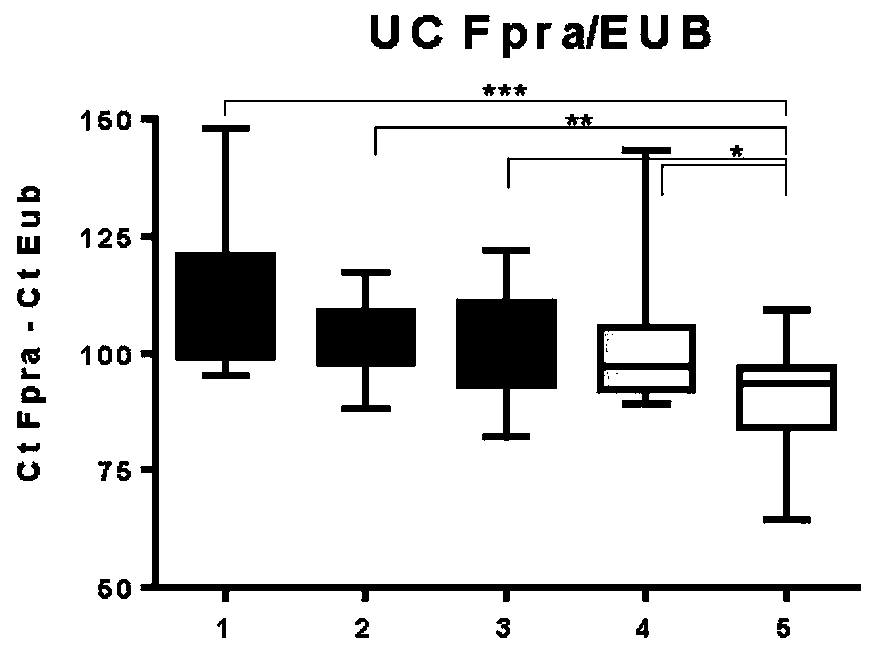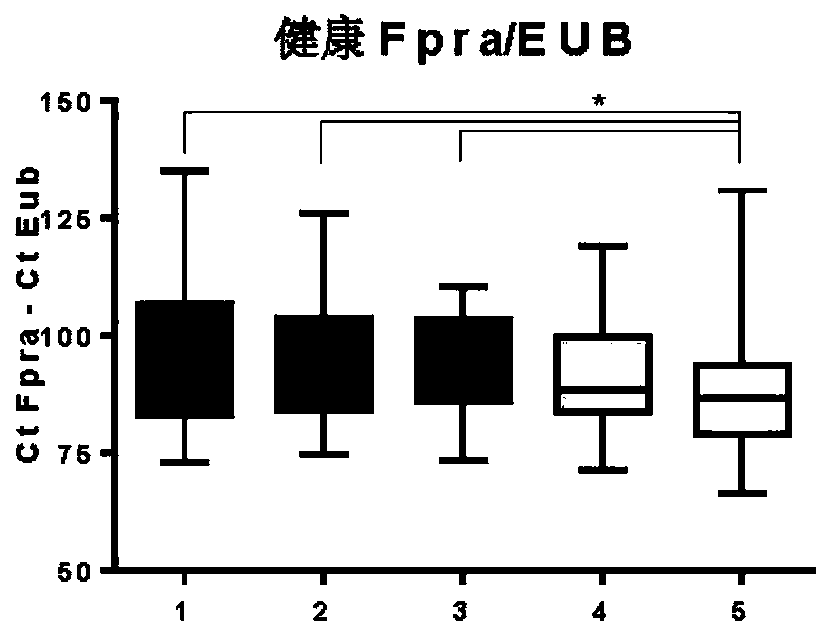Grape skin for use in treatment of dysbiosis
A technology of dysbiosis and grape skin, applied in the direction of microbial determination/inspection, biochemical equipment and methods, and resistance to vector-borne diseases, etc. It can solve the problems that Faecalibacterium prausnitzii strains cannot grow citrus pectin
- Summary
- Abstract
- Description
- Claims
- Application Information
AI Technical Summary
Problems solved by technology
Method used
Image
Examples
Embodiment 1
[0217] Example 1.- Characterization of the determined dehydrated grape skin composition
[0218] The dehydrated grape skin composition was obtained by a method comprising drying a white grape variety from the grape species Vitis vinifera (i.e. Grenache Blanc (Aren Empordà, Catalan , Spain)) for 2 days, then ground and sieved using a 1 mm sieve, the resultant composition having a particle size of 1 mm or less is referred to herein as "Previpect TM ".
[0219] The following table provides the results of the analysis of the chemical composition of this grape skin component, for example, indicating the content of soluble and insoluble fibers and neutral sugars:
[0220] Chemical composition analysis:
[0221] result:
[0222] Total sugar (expressed as glucose) % (p / p) s.s.n 53.24
[0223] Method: Lurff-Schoorl volumetric method (regulation (EC) n°152 / 2009)
[0224] Sugar chromatogram
[0225] Method: HPLC Refractive Index (RI)
[0226]
[0227] Soluble and insoluble di...
Embodiment 2
[0241] Example 2.-Previpect TM In vitro incubation with stool samples from IBD patients and healthy subjects
[0242] Materials and Methods
[0243] 1. Patients, Clinical Data and Sampling
[0244] From 13 healthy subjects (H) and 11 patients diagnosed with inflammatory bowel disease (IBD), 5 of whom were diagnosed with Crohn's disease (CD), 6 with ulcerative colitis (UC )) Fecal samples were obtained. The volunteers were recruited by the Gastroenterology Service of Dr. Josep Trueta University Hospital (Girona, Spain).
[0245] Subjects recruited as IBD patients had been diagnosed according to standard clinical, pathological and endoscopic criteria, and all patients had active disease in terms of inflammatory response (calprotectin level over 250 μg / G or protein C response (PCR ) level exceeds 0.5μg / L). A control group consisting of healthy subjects without any known gastrointestinal disease was recruited according to clinical criteria.
[0246] 2. Sample collection,...
Embodiment 3
[0310] Example 3.-Previpect TM In vitro incubation with stool samples from IBS patients and healthy subjects
[0311] Materials and Methods
[0312] 1. Patients, Clinical Data and Sampling
[0313] Fecal samples were obtained from 3 healthy subjects (H) and 3 patients diagnosed with irritable bowel syndrome (IBS). The volunteers were recruited by the Gastroenterology Service of Dr. Josep Trueta University Hospital (Girona, Spain).
[0314] Subjects recruited as IBS patients were diagnosed according to the Rome IV criteria for IBS: Abdominal pain on average at least 1 day per week during the past 3 months with two or more of the following kind:
[0315] (1) related to defecation
[0316] (2) Related to changes in frequent stools
[0317] (3) Associated with a change in stool morphology (consistency); and
[0318] Symptoms must have started at least 6 months ago (Lacy et al., Gastroenterology 2016, 150(6), 1393-1407).
[0319] A control group consisting of healthy su...
PUM
| Property | Measurement | Unit |
|---|---|---|
| volume | aaaaa | aaaaa |
Abstract
Description
Claims
Application Information
 Login to View More
Login to View More - R&D Engineer
- R&D Manager
- IP Professional
- Industry Leading Data Capabilities
- Powerful AI technology
- Patent DNA Extraction
Browse by: Latest US Patents, China's latest patents, Technical Efficacy Thesaurus, Application Domain, Technology Topic, Popular Technical Reports.
© 2024 PatSnap. All rights reserved.Legal|Privacy policy|Modern Slavery Act Transparency Statement|Sitemap|About US| Contact US: help@patsnap.com










